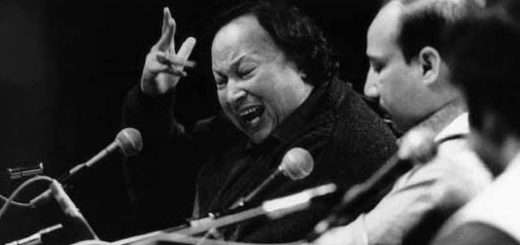Pervez Industrial Corporation: Cost Accounting Report for MBA
The company we are going to be talking about in this report is Pervez Industrial Corporation. It is a manufacturing company and its major line of business is shoe care products. Apart from these, it also manufactures some household as well as personnel care products.
There three product categories contribute about 30 product lines in total. We chose this company because it operates on a relatively small scale yet it has diverse manufacturing interests and there are different production processes involved. Taking a look at the company’s history: It was founded and established in 1955. In the beginning it only had a limited number of products and the total output was also considerably less than what it is today. The corporation developed with time and is currently manufacturing diverse products. Included among its shoe care products is Kiwi shoe polish that it manufactures under license from Kiwi International. The management team consists of 15 people.
As we will be concerned mainly with the cost department and its activities, therefore it is necessary to describe the
structure of the cost department and its activities. As far as the management is concerned, there are three key individuals involved with the costing process.The management accountant is the head and has two cost assistants who are also accountants. These three people are interdependently responsible for developing and maintaining the cost records of the organization.
Although, not fully computerized yet, the cost accumulating system is being automated and Pervez Industrial Corporation currently applies computers to only certain aspects of the cost system. The software used by the company is in-house developed and therefore improve the company hopes to fully automate the cost analysis system in the coming few years. At present, the position in the market van be judged from the fact that the management of Pervez Industrial Corporation considers Reckitt & Colmann as their major competitors.
DEPARTMENTATION & PROCESSES
As the firm manufactures mostly shoe care and related products, we will concentrate on the production processes involved in the manufacturing of these products.
Basically there are three production departments and the products flow in a chain through these departments.
- Manufacturing Department
- Filling Department
- Packaging Department
MANUFACTURING DEPARTMENT
This is the core producing department. Here the raw materials for various products are put together in fixed quantities that have been determined on the basis of product formula. The product formula for each product describes precisely the percentage of raw materials to manufacture one pound of the final product. The estimated quantities of these raw material are blended together and heated in a ‘electric kettle’ which are the basic manufacturing units in the process
This process results in the manufacturing of the final product, i.e., shoe polish. The product at this stage is in large quantity and is then transferred immediately to the next department.
FILLING DEPARTMENT
The product is transferred to the filling department as crude mass. In this department the product is split into units on the basis of weight. This is the first step and it gives a lot of small units of crude mass of uniform weight. The next step in this department is the filling of these units in separate containers. They are pressed into shape and then filled in the container. The final output of this department is the processed product filled in the container. These containers at this stage only have the product and no protection covering (as in the case of shoe polish) or lid has been placed on the containers. These are then transferred to the next department.
PACKAGING DEPARTMENT
This is the last of the line departments. Here the containers are closed and they are packaged in bigger containers for final transfer to finished good’s inventory. No further processing is needed and the goods are transferred to the firms stores.
This was a brief description of the production departments and the processes involved during manufacturing process. Apart from these, there are also four service departments which also play a significant role in keeping the production processes running smoothly. They are as following.
- Workshop
- Boilerhouse
- Quality Control
- Time and Security Offices
The workshop department is responsible for the smooth operations of the machines and mechanisms involved in production. Its field of operation is spread over all the three production departments and is basically involved with maintenance and repair jobs that arise from time to time in various departments.
The Boilerhouse is another important service department and its major concern is looking after the ‘electric kettle’ operations. This includes temperature control and duration of the product’s exposure to heat.
Next comes the quality control department. This department is responsible for insurance of maximum quality products and minimum spoilage. The quality control department inspects the units at several points on the production line. Usually they are checked before they are transferred to the filling department and once again after they have been filled to locate and separate any improperly filled containers.
The next department concerned with efficiency maintenance is the time and security offices department. It ensures the safety and security standards of the production facilities.
The costs of the service departments are allocated directly to the production departments at the end of the six-month period.
COST ACCUMULATION SYSTEM
As Pervez Industrial Corporation is involved in the manufacturing of large quantities of similar products, it has adopted the standard costing procedure for the cost accumulation.
Standard costing in a process cost system applies a predetermined cost to units as they are produced, rather than applying the costs when the units are completed. These predetermined costs are also known as standard costs. They are planned for and budgeted well before the production begins. While estimating the standard costs the management assumes the normal working conditions throughout the production period. Standard costs are calculated for each product on a per unit basis. These per unit costs then become the management tool to measure the efficiency of the producing departments. This can be done by comparing the actual costs, which are also accumulated as the procedure takes place, with the budgeted or standard costs at the end of the period.
The establishment and estimation of various standard costs are an important step in the budgeting process. The first step that Pervez Industrial Corporation’s management takes is to work out the expected demand for the next two periods (one year). This demand is arrived at by taking the previous years’ sales of a product and adjusting there figures to the information gathered from the different sales outlets about possible fluctuations in demand. After all the computation has been completed, the management finally arrives at an estimate of the next periods demand of the product.
The next step is determining the current inventory level and budgeting for the derived inventory levels. This relatively simple because the data pertaining to inventory size and usage amounts is readily available on the computer database.
The final step involves determining the production requirements for the next period and this is arrived at by the data provided for the first and second steps. An additional fact that is taken into consideration while budgeting production is the allowance for normal spoilage and manufacturing defects.
After an overall level of production is budgeted, the costing department then budgets the standard costs of each product according to the three cost elements; materials, labor, and factory overhead.
COST BUDGETING FOR MATERIALS
Once the total production level for each product has been established, budgeting the cost of raw materials required is relatively simple. Two standards have to be estimated.
- Raw material price standard
- Raw material usage standard
The product formula for each product is the basis for determining both these standards. The product formula not only states the chemical composition of each product but also provides information about the quantity of each type of material required to produce 1.lb of the product.
The raw materials usage standard is established on the basis of the quantities obtained from the product formula. While budgeting materials usage, a …. is made for the evaporation of the certain materials during the production process that have to be added back.
For determining the materials price standard, the management is dependent on the purchasing department. Also it will determine the amount of the raw materials purchases required to keep inventories at the budgeted level.
Once the amount of purchases necessary has been determined the next step is to estimate the purchase price of each material type. This price is based on the previous periods purchase records provided by the purchasing department. The previous years’ prices are adjusted to the inflation rate and any price fluctuations that may be caused by expected change in supply and demand. The suppliers are also consulted before the final purchase price id budgeted. The company uses different types of raw materials, it must estimate the standard purchase price for each product and for different supplies. Sources of supply are identified at the end of each period and the most cost efficient one is used as a standard for estimating price.
The final step and the most important one are the preparation of cost budget for materials (including both price and usage standards). This budget accounts for the one of the three elements of the total production cost budgeted (standard costs). The next element to be budgeted is direct labor.
COST BUDGETING FOR LABOR
Standard labor costs are similar to standard materials cost in the sense that they too can be determined in two categories.
- Labor price standards
- Labor usage standards
Labor price standards are the average estimated labor rate per hour. This is complex process since the corporation has diverse labor force and the wage differential from department to department is very high. The first step involved is the determination of the total labor cost. Each department is required to estimate the wages of the workers for the coming period. These estimates are based on the previous years’ wages adjusted to inflation and any change in wage due to an agreement between the management and labor union. It is company policy not to include vacation pay and allowances in the computation of gross wages. Each department forwards its estimate to the costing department where the total cost of the direct labor for the next period is then estimated and a budget is prepared for direct labor costs.
The total direct labor hours worked id estimated from the information provided by the production budgets of various quantities. The predetermined labor hour rate per unit is multiplied by the total production (units) of that particular product to arrive at the total labor hours required for that product. The labor hour rate per unit of product is estimated at the department level. The costing department then simply adds the labor hour requirements of all the departments to get the total labor hour requirement.
The final step includes the division of total labor costs by the total hour’s requirement to get the labor price standard (estimated average rate per labor hour).
COST BUDGETING FOR FOH
The factory overhead costs are budgeted at Pervez Industrial Corporation using machine hours as a base. The total FOH costs are estimated separately. The fixed FOH costs are estimated on the basis of previous years’ budgets and are estimated by the costing department itself. The variable FOH is forwarded to the costing department by the producing department. The variable FOH mainly depends on the level of output for each department. This level of output has of course been predetermined.
The variable and fixed components are reconciled and the total FOH cost for the coming period is budgeted.
In order to determine the FOH application rate the denominator activity e.g., machine hour has also to be estimated. This is relatively simple and is done by the producing departments based on the prior experience. The total machine hours worked is also budgeted by the costing department.
The calculation of the application rate is now merely a division of total FOH costs by the total machine hours worked to arrive at the budgeted FOH application rates for the coming period.
With the preparation of FOH cost budget all the costs of the coming period have been estimated, budgeted and classified with the help of these documents, the costing department also prepares budgeted balance sheet and income statement for the forthcoming period and the budgeting procedure is completed.
VARIANCE ANALYSIS
The actual costs e.g., direct materials, direct labor and Factory overhead are accumulated as they are incurred during the production period. At the end of the period, these actual costs have to be compared with those that were budgeted in the beginning of the period to see whether the management has been successful in attaining its goals and also necessary for the accountability for the production managers. The differences that arise in the budgeted and actual costs are classified into three broad categories.
- Direct material variance
- Direct labor variance
- Factory overhead variance
DIRECT MATERIALS VARIANCE
Direct material variances are classified into two classes that are
- Direct material price variance
- Direct material usage variance
Direct material price variance is the difference between actual purchase price of direct material and the budgeted purchase price per unit multiplied by the actual quantity of materials purchased.
Price Variance = [Actual price per unit – Standard price per unit] X Actual quantity
The responsibility of price variances lies with the purchasing department. If the variance is positive it is said to be unfavorable while if it is negative it is said to be favorable. Favorable variances reflect on the efficiency of the corresponding department whereas unfavorable variances need to be investigated and the causes reduced or eliminated.
Direct materials usage variance is similarly the difference between the actual raw materials used in the production process and the quantity that was budgeted.
Usage Variance = [Actual Quantity – Standard Quantity] X Standard Price
The responsibility of an unfavorable variance lies with the production department since it is the department’s responsibility to ensure the materials are used efficiently and the wastage is minimum. This variance may also arise because of low quality of raw materials and it then becomes the responsibility of the purchasing department that is responsible for the acquisition of the high quality materials from the most cost effective supplier. Whatever the reason may be it needs to be investigated and corrected to increase the efficiency for the next period.
DIRECT LABOR VARIANCE
Direct labor variance is of two types.
- Labor rate variance
- Efficiency variance
The labor rate variance is the difference between the actual labor rate and the budgeted labor rate.
Rate Variance = [Actual Rate – Standard Rate] X Actual Labor Hours
Changes in the labor rate can be caused by government policy or a contract between the management and the labor union. The variance has to be adjusted when establishing standard labor rate for the next period.
Labor efficiency variance is the difference between the actual labor hours the workers require and the budgeted labor hours allowed, multiplied by the standard labor rate.
Efficiency Variance = [Actual Labor Hours – Standard Labor hours]X Standard Rate
An unfavorable positive variance indicates that the workers were as efficient and productive as they should’ve been but that there were undesirable stoppages and breakage’s in the production cycle. Again it is necessary to investigate the root cause of these variances and find the people responsible.
FACTORY OVERHEAD VARIANCES
The factory overhead variances can be of two types as well.
- Spending variances
- Efficiency variances
The spending variance is the difference between the actual cost of the indirect material and labor (part of FOH) and the budgeted cost of these elements. This is also equivalent to the difference between total actual FOH and the standard FOH applied to the machine hours worked.
The spending variance usually arises because of the price changes in materials or labor rate of indirect labor. That is why these variances are often uncontrollable by the management. These just have to be adjusted while estimating intended FOH cost for the next period.
The efficiency variance is the difference between the actual machine hours worked and the standard machine hours allowed, multiplied by the standard FOH application rate.
Efficiency variance = [Actual Machine Hours – Standard MachineHours]
X Standard FOH application rate
This variance results from the inappropriate of the machines or from the defects and deteriorating conditions of the machines themselves. Management needs to consider whether the machines need repair or replacement to eliminate the variance.
The final treatment of these variances involves then addition back into the costs of production: The variances are allocated properly to the cost of goods sold, finished goods and work-in-process inventory eventually resulting in an increase in the unit costs of products in these inventories.
TREATMENT OF SPOILAGE
As in every process, the production at Pervez Manufacturing involves a certain amount of spoilage costs. The spoilage is checked by quality control department and reported to the production authorities. The units spoiled are classified into two broad categories.
- Manufacturing Defects
- Spoilage
Manufacturing defects are those which are an inevitable part of the manufacturing process or a direct cause of the production process involved. These units are usually been expected to turn out defective beforehand and therefore are budgeted costs. These items are budgeted under a wastage allowance account. Also, some of the defective products are sold and their salvage value is treated as a recovery of defective units cost and is deducted from the final normal spoilage costs. This sometimes also leads to a favorable variance between the budgeted and actual spoilage costs. The possible manufacturing defects that can arise during the production of a product such as shoe polish may be the bottom layer of polish in the ‘electric kettle’ which might lore its polishing characteristics because of enormous pressure along with heat.
The second category includes only that wastage which is in excess of the normal spoilage as has been brought about by reasons other than manufacturing defects. An example could be improper temperature control of the kettle which could waste a thicker bottom layer of the polish than it would in normal circumstances. This and all other spoilage will be accounted for in an inventory obsolescence account and will in the end be deducted from the work-in-process inventory account. This spoilage will be recognized as period cost and eventually put into a loss account.
INVENTORY MAINTENANCE
Since Pervez Industrial Corporation is a mass production concern, inventory maintenance plays a significant role in the cost control techniques. The first step in the inventory maintenance is the estimate if the next periods’ sales followed by an estimate of the future production for at least the next two months. After the estimates have been worked out, the materials to be used in these products are calculated on the basis of the product formula.
This leads to the final estimate of the 2-month material requirements for the corporation. After taking into account the current inventory balances and the required inventory balances (these are determined from the budgeted balance sheet and income statements for the period), the firm decides how much material inventory it will purchase and carry.
The inventory transactions are recorded and accumulated for on a perpetual basis. The inventory accounts are maintained partially by the accounts personal and partially on a computer system. In fact, the materials costing and issuance is accounted entirely by the computer system.
Material variance is assumed to follow FIFO procedures and the unit cost of the raw material that fluctuates with time is conceptually allocated to WIP inventory on a FIFO basis whenever direct materials are issued.
The proper time and size of an order of purchase of materials is determined partially by the firm’s production requirements and partially by the predetermined and budgeted level of inventories that must be maintained at all times for maximum efficiency. In case of widely fluctuating prices or inflation, the firm may carry larger inventories than in normal circumstances to ensure a stable supply of materials at a cost that is close to the budgeted cost.














